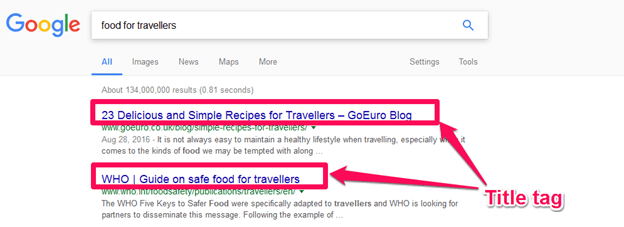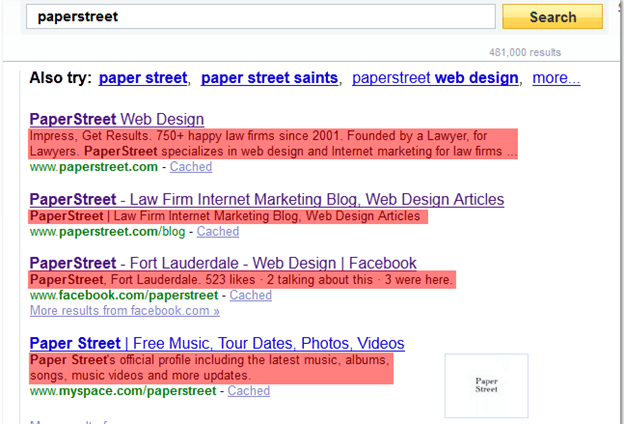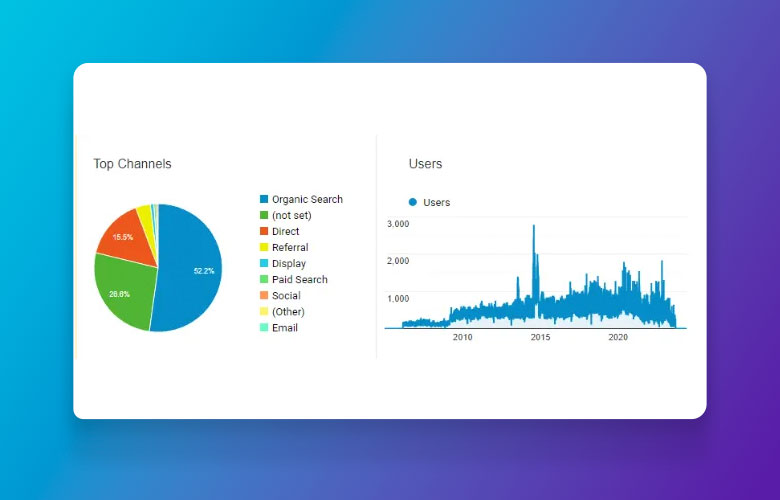Best Practices Guide for On-Page Optimization

On-page optimization is an important marketing tactic for your firm’s competitiveness. Without it, you’ll risk losing all visibility to users coming into your website from organic search. But succeed at it, and you’ll bring in a consistent return on investment.
In other words, on-page optimization, or on-page SEO, is a low-cost but high-return investment strategy that can bring you long-term benefits and ensure that you remain competitive online.
As such, we’ve created this on-page optimization guide, so that you can understand what it is and how to use it to grow your business and solidify your online marketing strategy.
On-Page Optimization: The Basics
On-page optimization, or on-page SEO, involves optimizing your web page content so that search engines recognize it as relevant for users’ search queries. In this section, we cover the most essential ways in which to conduct on-page optimization.
Direct Keyword Matches
The key way that search engines’ algorithms determine your content’s relevance is by identifying whether your pages have keywords that match users’ search queries. Make sure that you actually have direct matches to keyword phrases several times within your page. You want to make sure that’s done naturally and done within the headings body content of your website if it, again, fits naturally. Don’t overdo it.

Optimize with Similar Words
Second, make sure that you include synonyms within the body content of what you’re actually writing. Google actually calls this keyword mapping. So, for example, if the keyword phrase that you were targeting was “Miami car accident lawyer,” make sure that you’re using synonyms like “Miami-Dade,” “auto,” “wreck,” and legal terms that are related to lawyer, like “attorney.” If you’re a screenwriter or book author, submitted your script/book to your agent, and they told you to make XYZ fixes on it, you’re making niche edits to your script/book pages. If you’re editing the content on your website after you’ve written the article days/weeks/months/years ago – whether for internal SEO purposes or because you’re paid for it – that’s a niche edit.
Word Count
SEO content must be at least 1,000 words for the greatest ranking potential. (1,500 words is better.) Nevertheless, make sure that when you are writing, you’re actually doing it with the user intent in mind. Keep the content easy to understand and engaging, yet still illustrative of the fact that you are an industry leader.
Keyword Research
You need to know what people are searching for before starting an optimization campaign. Targeting the wrong keywords will just be a waste of time and effort. Though the popular keywords are most important, finding keywords that are less popular yet not strongly targeted by competitors can also be a worthwhile strategy.
Title Tags
Specific title tags need to be created for each page of content. A title tag is the page title that is displayed in web search results. Title tags also tell web users what your page is about before they enter your site. A title tag should be short, descriptive, and appealing enough to entice readers to click through to the page. It should also include the keywords you are trying to target.

Below are a few tips for writing effective title tags:
- Be unique. Create a unique title tag for each page and subpage on your website.
- Follow the format. The title tag should contain your keyword phrase (two phrases if they fit), mention your brand (your law firm or company name), and accurately describe the page. If something must be removed, firm name is the least important information for SEO purposes.
- Keep it short. Title tags should be 65 characters or less. Spaces, commas, and hyphens count as characters.
Here is a sample title tag for a bio page on an Atlanta bankruptcy law firm website: “Atlanta Bankruptcy Attorneys | Chapter 11 Filings | Brown Law”
Note that you should include your firm name if you have the space. However, if your firm name is long, you may want to shorten or omit it altogether. Use that space carefully so that your keyword phrases are listed first in the title tag.
Headlines and Content
You cannot simply stuff the title tags. Headlines and page content must also match up with what you are targeting. Good content needs to contain the keyword phrases you are targeting.
Meta Descriptions
A meta description is the text that is displayed in search results which entices users to click through to the page. This description is not visible on the website itself, only in the code and in the search results. Meta descriptions tell searchers what the web page offers to the reader. This information is displayed by search engines as a snippet alongside your content link in search results.

Below are a few tips for creating effective meta descriptions that “win the click”:
- Be compelling. Your meta description should be concise and compelling enough to entice users to click on your result. Put your copywriting skills to work!
- Keep it to 165 characters. Meta descriptions should ideally be around 165 characters. Search engines generally will truncate the rest and it cannot be viewed by readers. (Note: spaces, commas and semicolons count as a character.)
- Make your description keyword-rich. It’s generally best to use your target keyword phrase once in the meta description.
- Make your description accurate. Make sure that the description properly describes the page. Inaccurate descriptions (e.g. overly general, of tangential relevance, etc) of your content may invite clicks from readers who will be disappointed when they learn that the content covers. Inaccurate meta descriptions can turn away users and damage your credibility.
- Make your description unique. Each meta description on your site should be unique In other words, there should be no duplicate descriptions.
Here is an example of an ideal meta description:
Schedule a free consultation with the experienced Miami medical malpractice attorneys at the Valley Law today. Millions of dollars of compensation recovered.
Internal Linking Structure
Your site should have main links from the homepage and the other pages of your website to you main, core content pages. For example, if you are writing a divorce blog post, you should link to the main divorce page. This will give better internal weight to various pages on your site.
Analysis
Finally, you should pick a goal and use metrics to analyze whether your campaign is successful. Whether it is simply gaining the vanity of obtaining top rankings, increasing site traffic, or – better yet – increasing the number of inquiries. Whatever the goal, everything should be tracked to prove the effectiveness of the campaign.
How Aggressive Should My On-Page Optimization Be?
Now that we’ve gone through the essential steps of on-page optimization, the question then becomes, how aggressively do you want your SEO team to optimize your site? Would you say, “I could care less what my content says, I want to rank high no matter what,” or would you say, “My brand is more important than SEO. I don’t want to see keywords anywhere”? Or are you somewhere in between?
Using the scale below, your SEO team should find out what option best suits your needs:
- I could care less what the content says, I want to rank high no matter what.
(Title tags, headlines, subheads, content editing, footer, and alt tags will all change.) - Edit away, I want to see high rankings.
(Edit title tags, headlines, content, footer, and alt tags.) - I want a mix of solid SEO and solid aesthetics.
(Edit title tags, headlines, alt tags, footer, and potentially some content.) - My brand is more important than SEO.
(Edit title tags, alt tags, and footer. Do not touch my content.) - I don’t want to see keywords anywhere.
(Edit title tags only. Under no circumstances should you touch our content or design.)
Typically, the default position is #3 – a mix of solid SEO and solid aesthetics. Specifically, your SEO team should optimize your title tags, meta descriptions, alt tags, header, footer, and weave your keyword phrases into your content.
Decide what approach best fits you and what plan of attack will help build the relevancy back to your website. Just understand that your results will be tangential to the strategy you pick. Thus, if you don’t want keywords to appear, your rankings are not likely to be as strong as your competitors.
On-Page Optimization Mistakes to Avoid
We’ve gone through what to keep in mind when conducting on-page SEO. Now, let’s go through some of the key mistakes that law firms and business make when trying to optimize.
Overstuffing
“Keyword stuffing” is overloading a web page with keywords, often in an unnatural way, in order to artificially gain ranking in search results. This not only turns users away, but can harm your site’s ranking.
Never repeat keyword phrases over and over. Instead, insert your keyword phrases in a way that makes sense contextually.
Redirects
Do not cloak your pages or use confusing redirects that may cause the search engine spider to miss your pages.
Hidden Text
Never hide your text on the page. White text on white background is the oldest trick in the book, and search engines check for this.
Understanding the Impact of Synonyms on On-Page Optimization
As if SEO weren’t complicated enough, it’s important to understand how synonyms impact your optimization techniques. For example, many people use the words “attorney” and “lawyer” interchangeably. If that’s the case, all things should be considered equal and you should receive the same results when you run a search on Google, Bing or Yahoo, right? WRONG!
Different Results for Different Words
Just looking from March of 2021 through March of 2022, Google Trends shows that the term “attorney” was searched for almost twice as much as the word “lawyer.”.
So, does that mean you need to go and change every reference on your current website to be “attorney” instead of “lawyer”? Not necessarily. You will need to do some research in order to determine what will work best for your firm. Depending on a user’s needs, people may actually search more for “Dallas car accident lawyer” instead of “Dallas car accident attorney.” If your local search analytics do reflect the phrase shift, you don’t need to change ALL of your content, but it’s wise to go back and change the key SEO factors such as the H1 and Title Tag.
My, How Things Have Changed!
A few short years ago, the trend showed that “lawyer” was used more in Google searches. So, how can you keep up with the changes? Google’s keywords tool lets users obtain data on exact keyword matches, as well as broad matches, and sometimes the result can differ from one to the other. That is why it is important for businesses and law firms that are interested in optimizing their sites for SEO purposes to do the work and conduct thorough research. In many cases, something as simple as adding a geographic qualifier could change the results dramatically.
Points to Consider
As you continue to think about whether “attorney” or “lawyer” will work best for your website, you will want to be sure to consider the entire keyword phrase you intend to use. The more specific a keyword is, the more relevant a user’s search results will be in Google or any other search engine. That said, you will want to consider the specific client base you’re trying to reach, as well as the practice area and your location.
You can also use some of the free tools that Google offers to help you, such as Google Trends, Keyword Planner and Google Suggest.
When Will the Results of On-Page Optimization Happen?
After you’ve optimized your webpage’s SEO, be patient. Obtaining search engine rankings takes time and is a trial and error process.
New sites can expect to be included in a search engines index anywhere from one week to one month after launch. Of course, this is just inclusion. It does NOT mean that you will rank high. Higher rankings could come several months later.
Older sites that are re-optimized can expect quicker results. We have re-optimized sites that appeared in the top rankings within a few days after the site’s re-launch. However, in some cases, it has taken a few months to obtain the desired rankings. Google indexing is capricious and it’s not uncommon for some pages to take a long time to be indexed.
Remember, there are rarely quick fixes in the SEO world. Search engine optimization is a continuous process – and the tactics evolve with Google’s algorithm changes. So if your optimization efforts don’t bring the results you want right away, don’t despair – you may need to assess and try again.
Get Expert On-Page Optimization Support
Although we’ve given you all the essentials of SEO optimization, it can still be a difficult process. Luckily, PaperStreet’s all-star team of designers, digital marketers, and tech experts is here to support you in achieving all of your online marketing goals.
To learn more about how we can help you succeed in your on-page optimization efforts, contact PaperStreet today.
April 19, 2022
Categories:Internet Marketing, SEO, SEO for Law Firms, Ultimate Guides & Best Practices
About Us
Did you know more than 200 clients have worked with PaperStreet for more than 10 years?
Get a Free Website
Analysis and Consultation
Marketing Services




